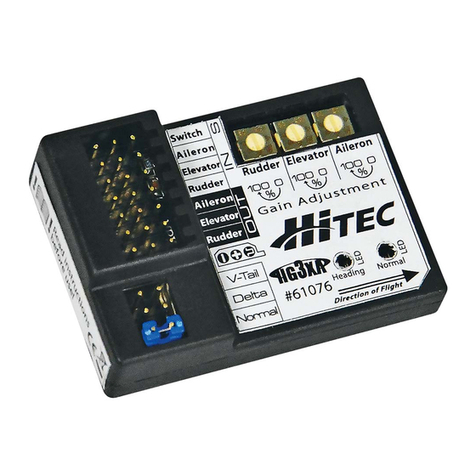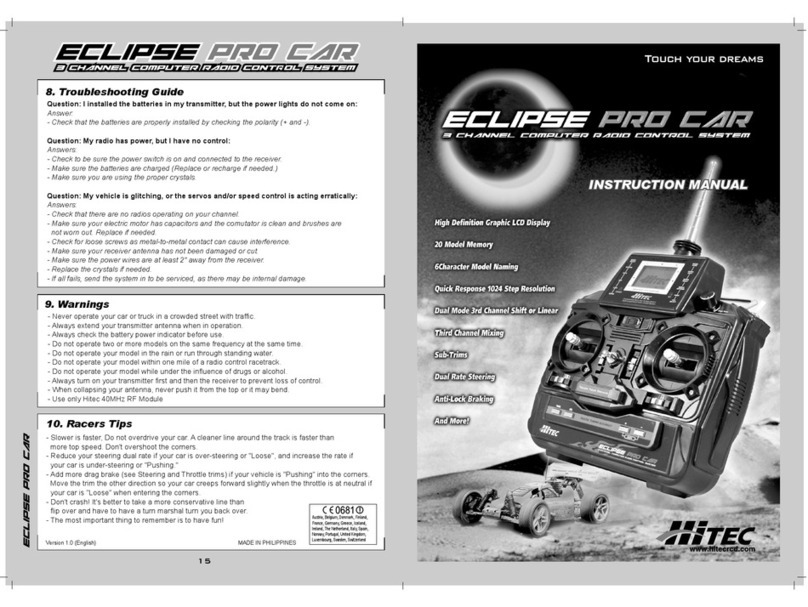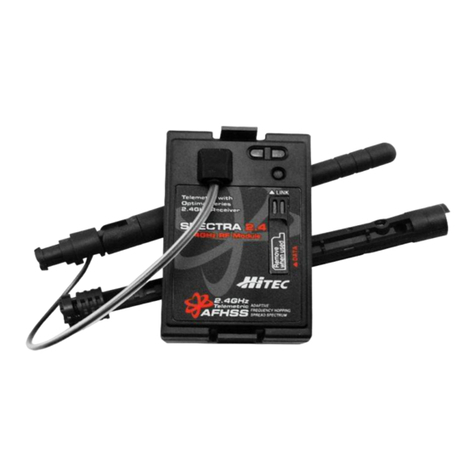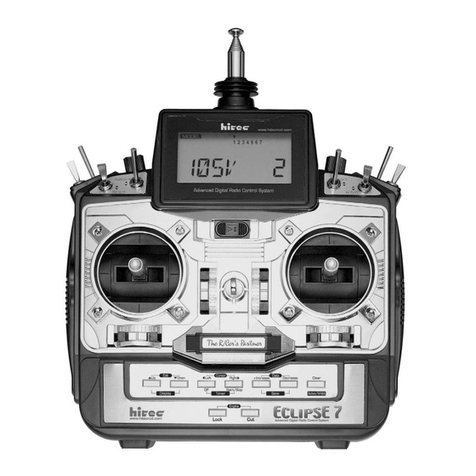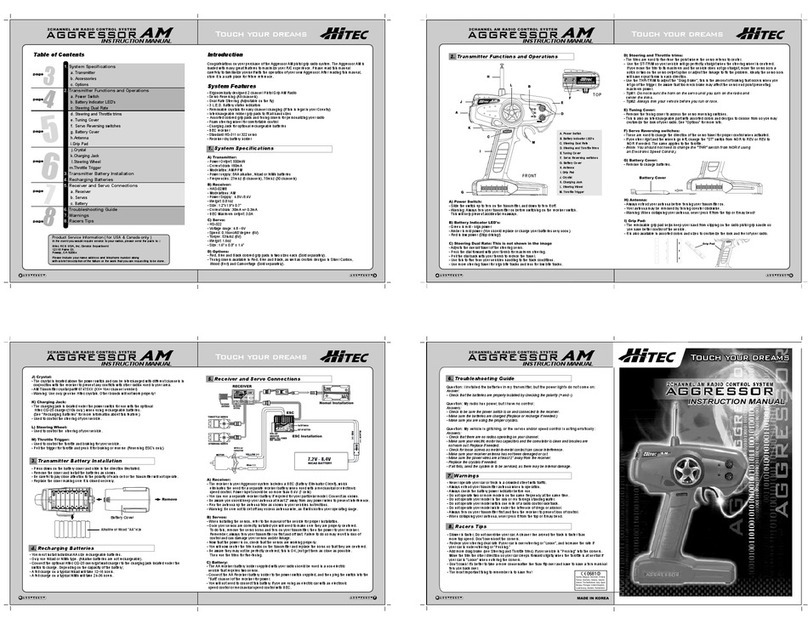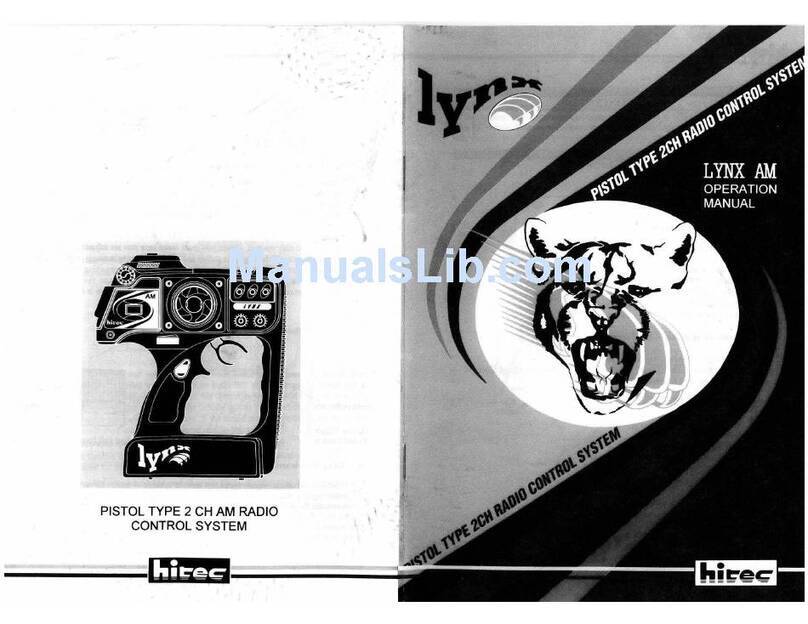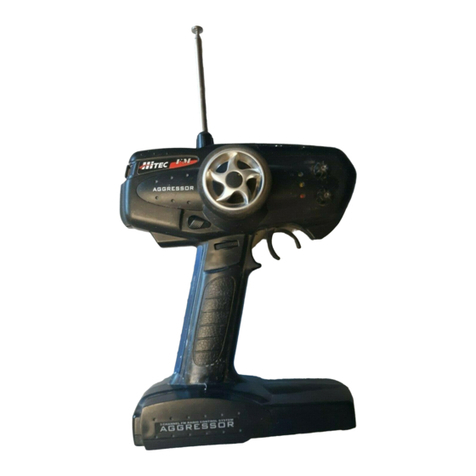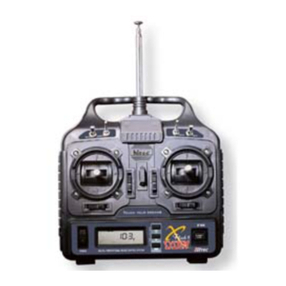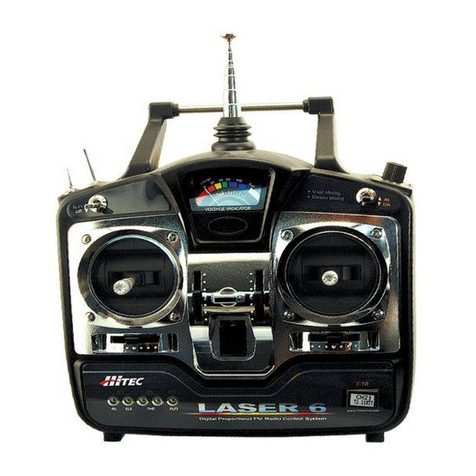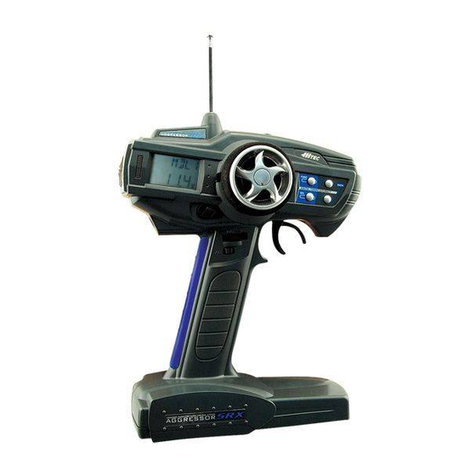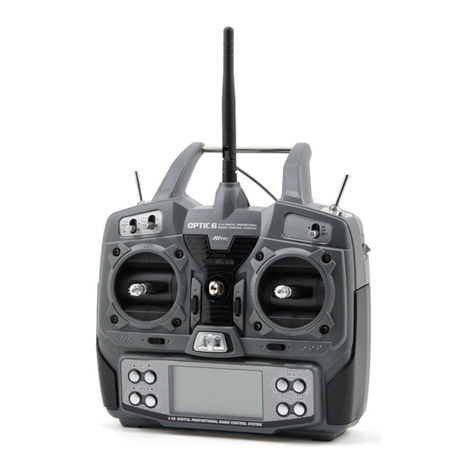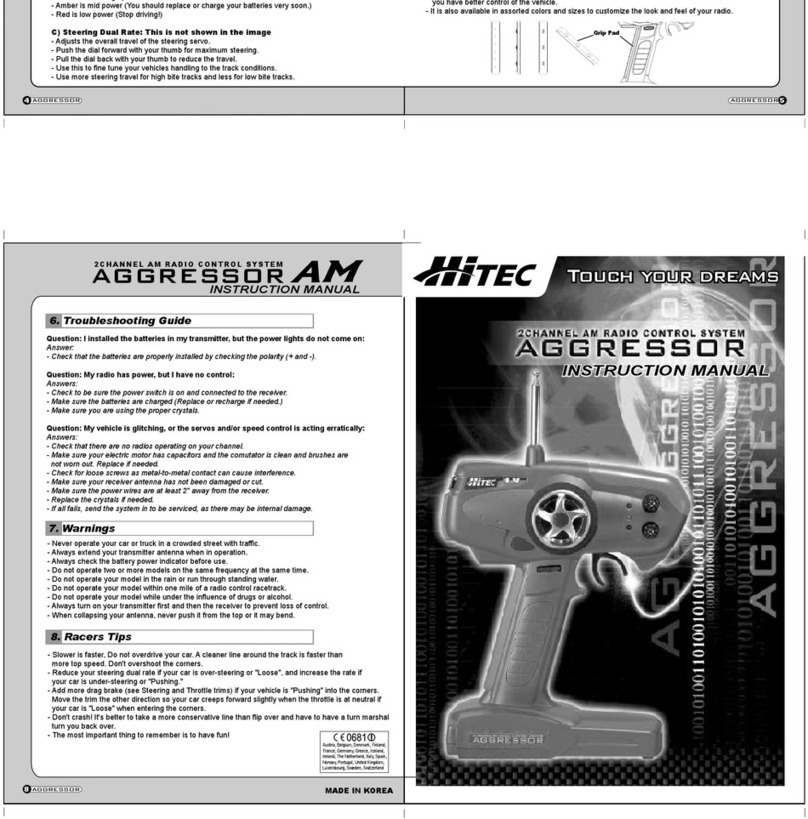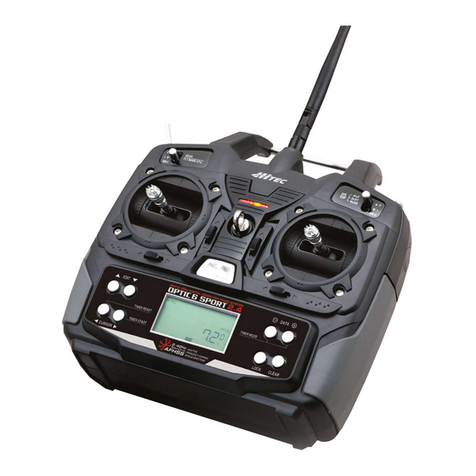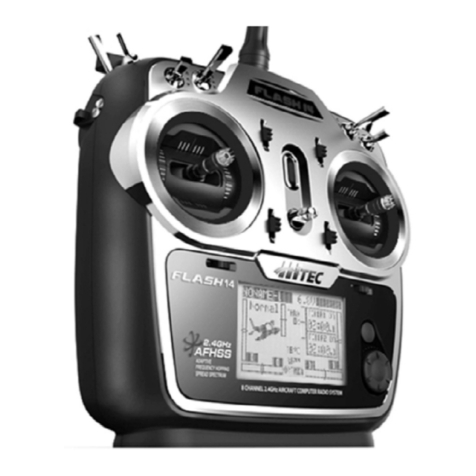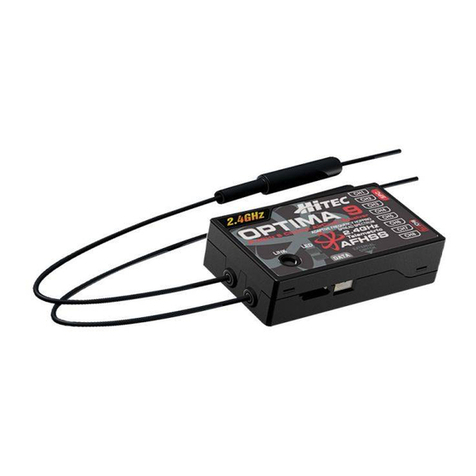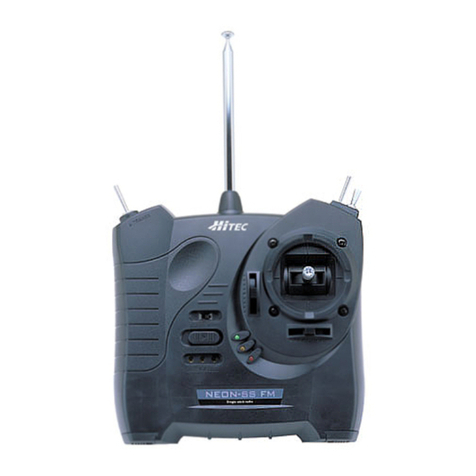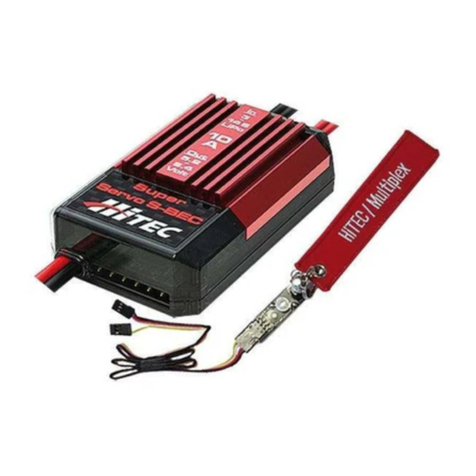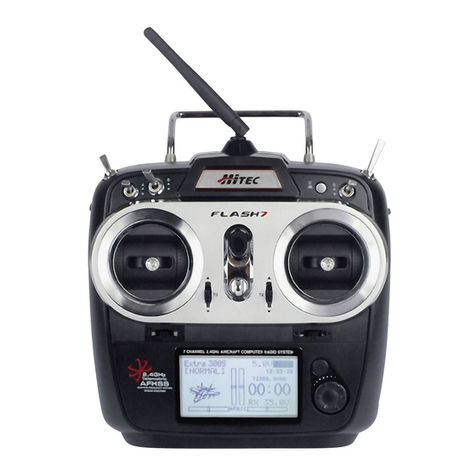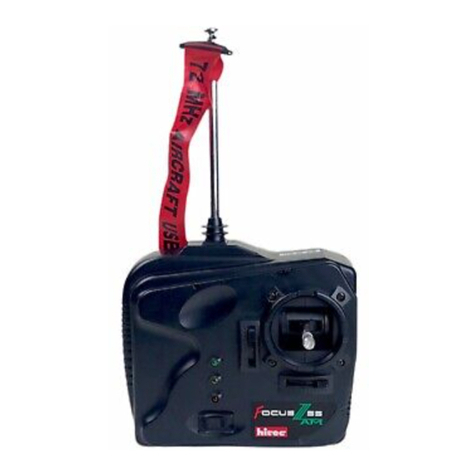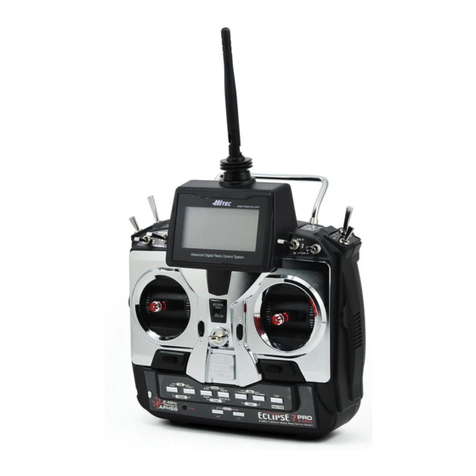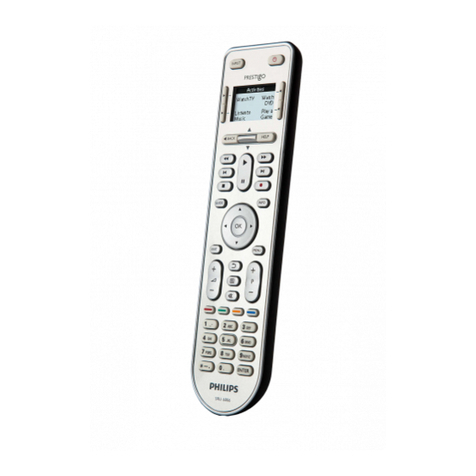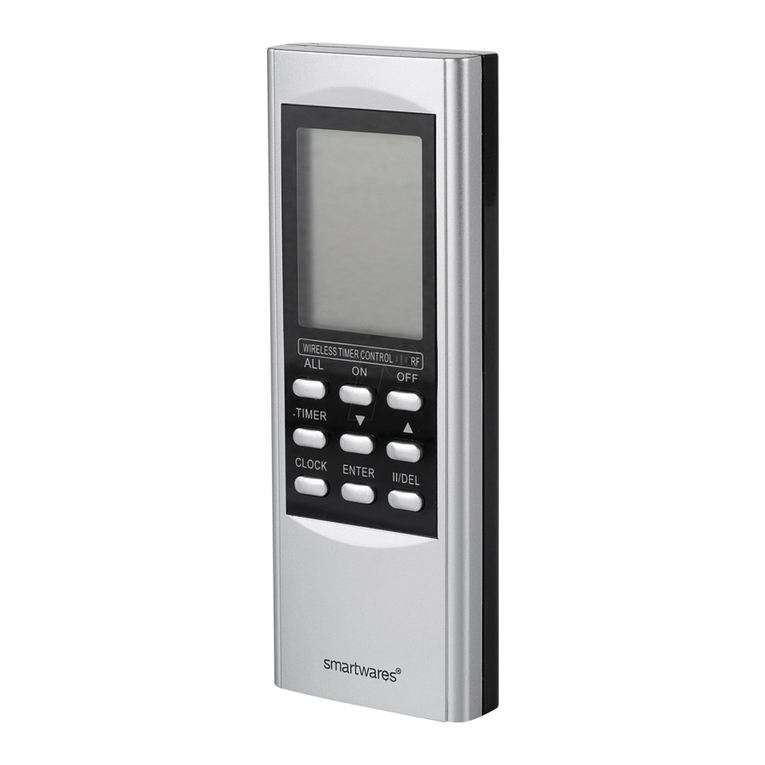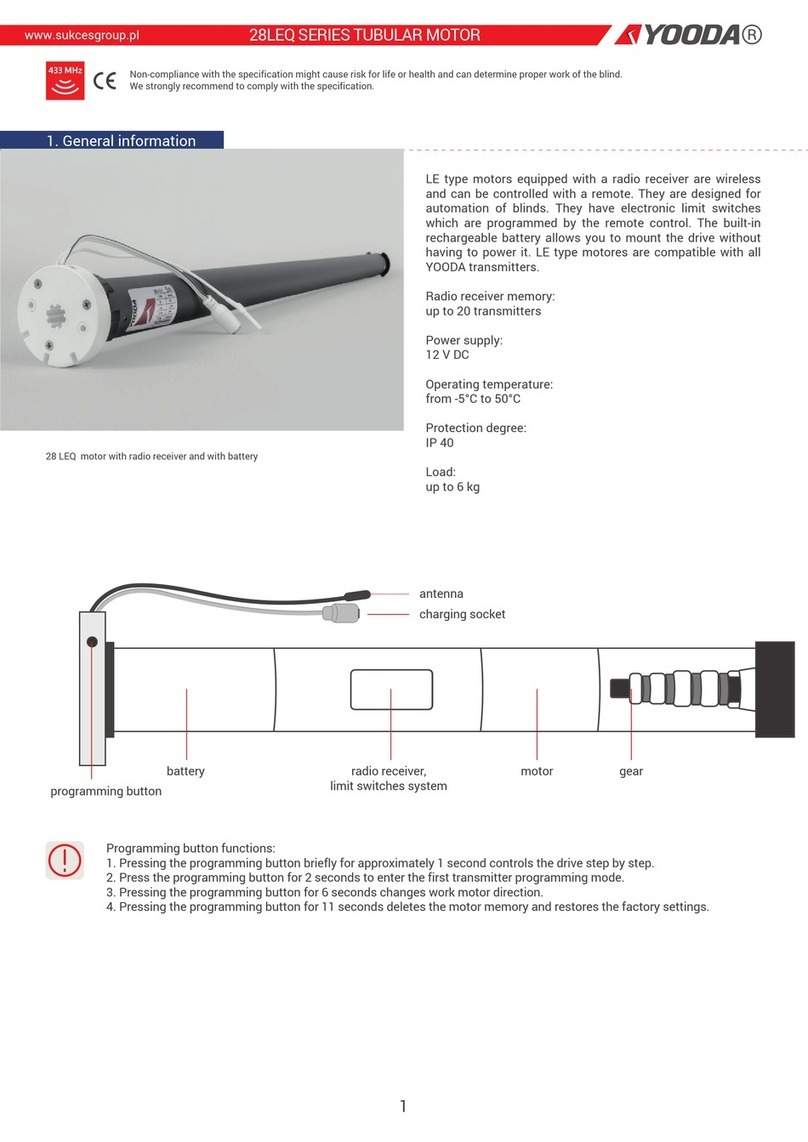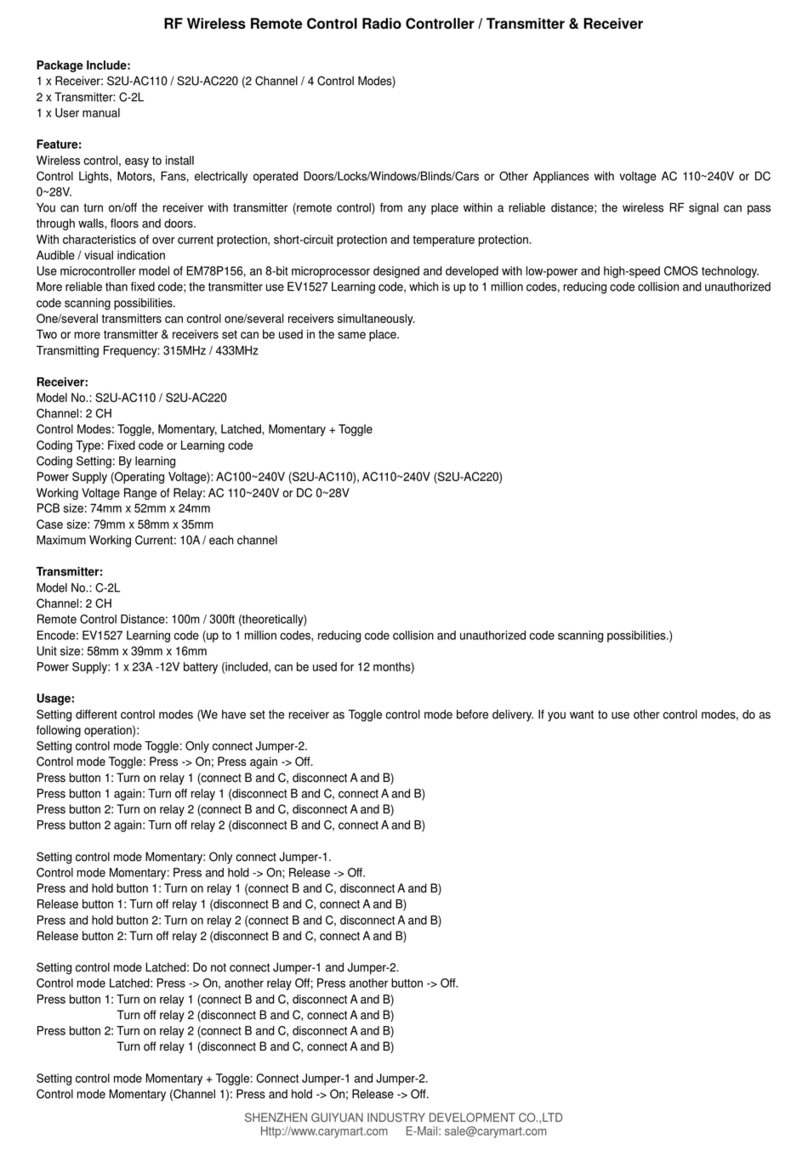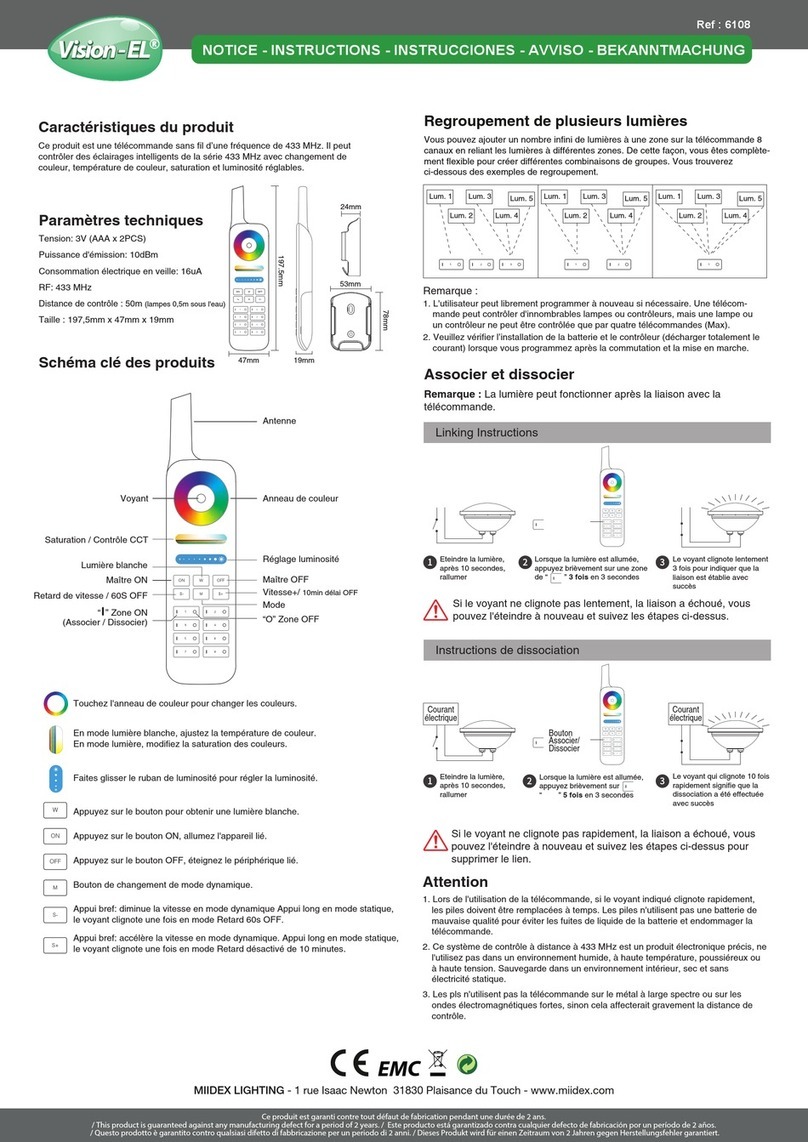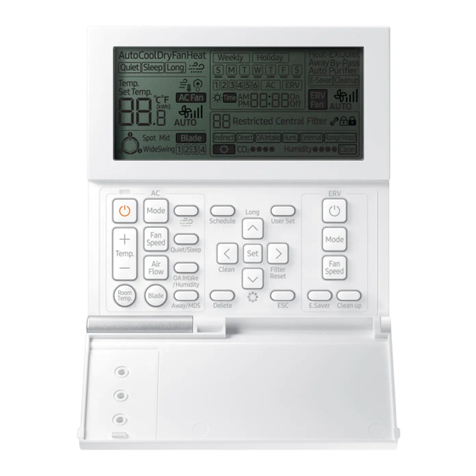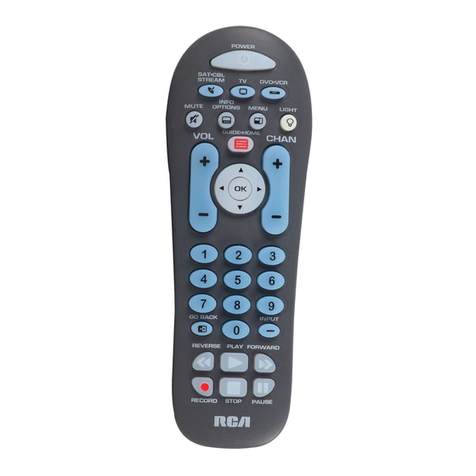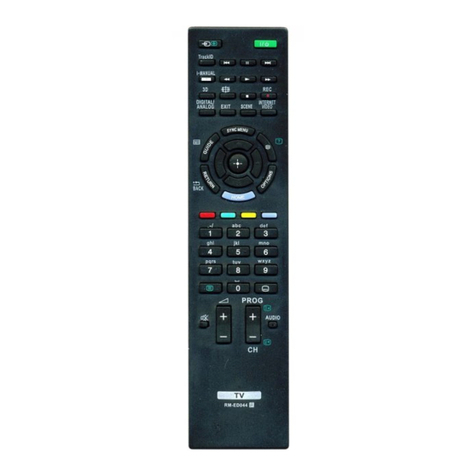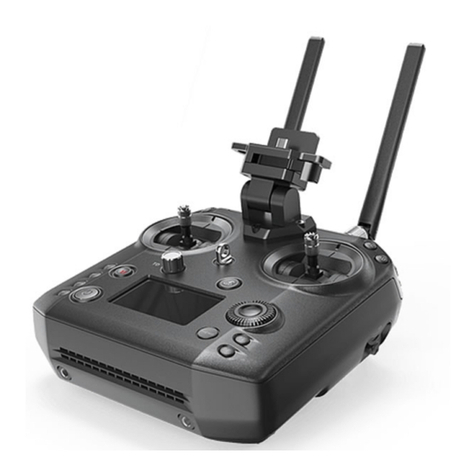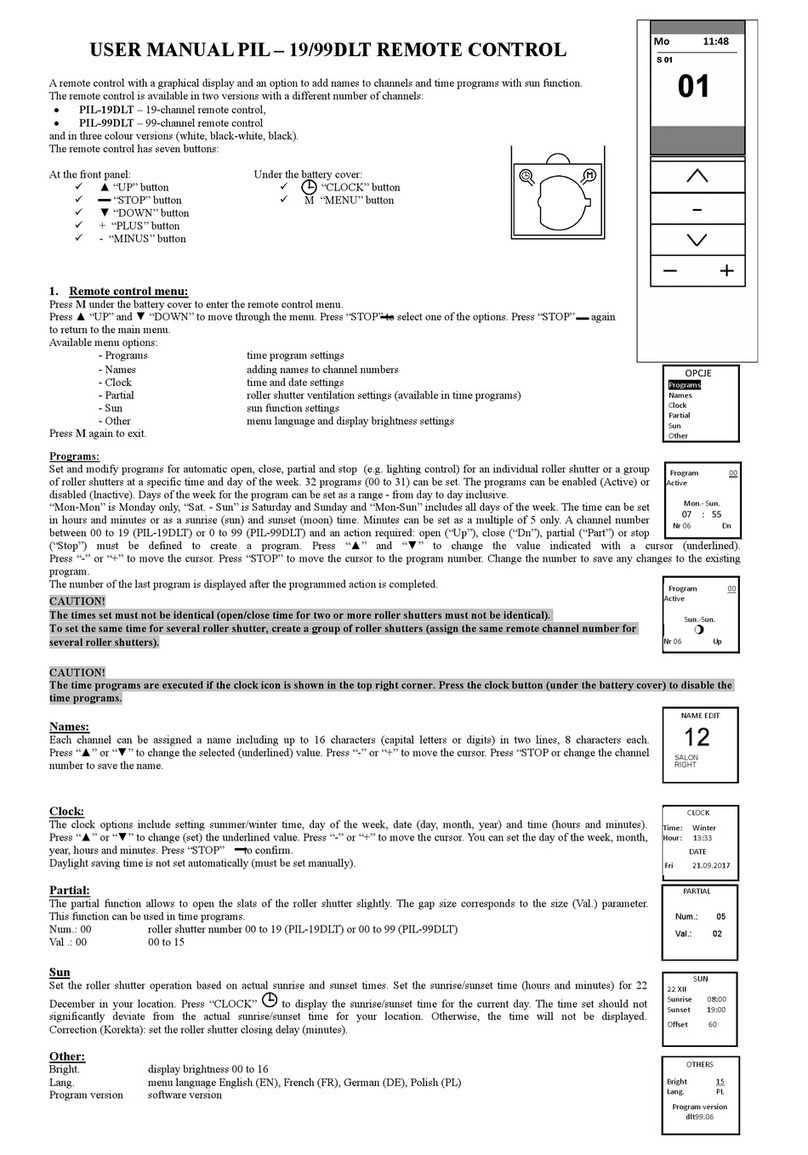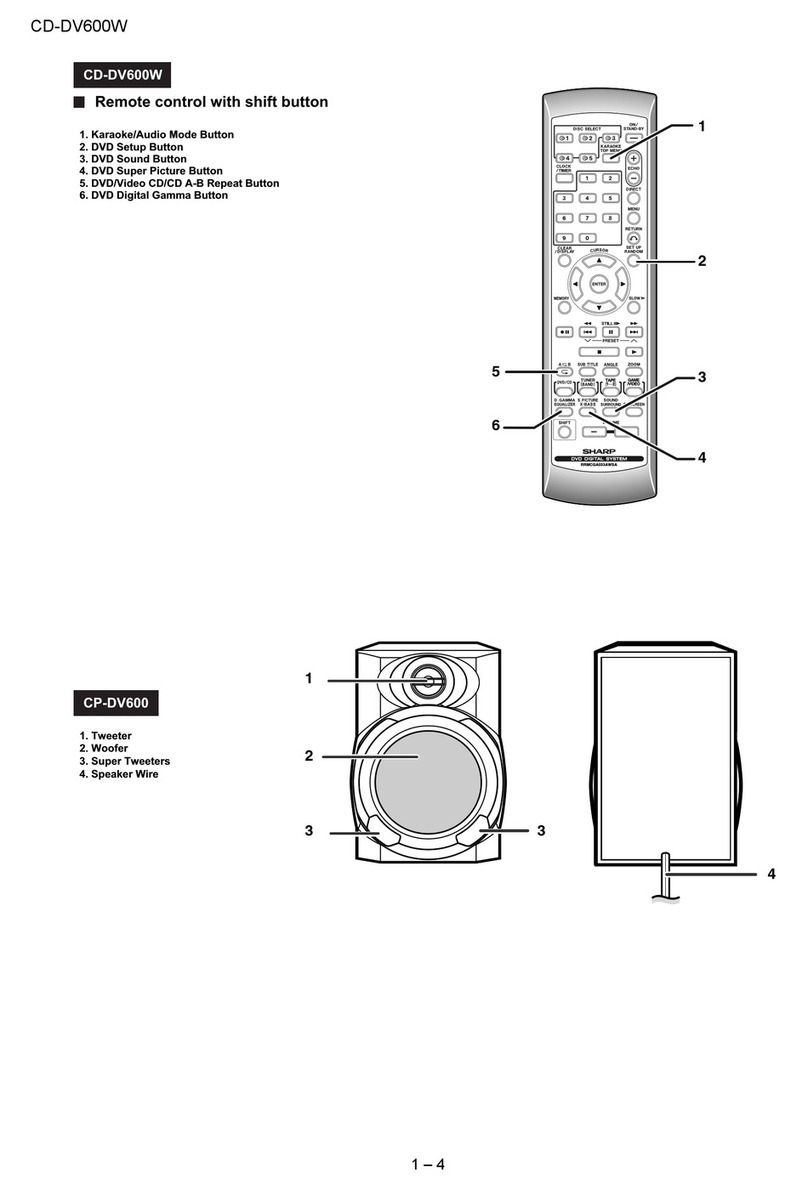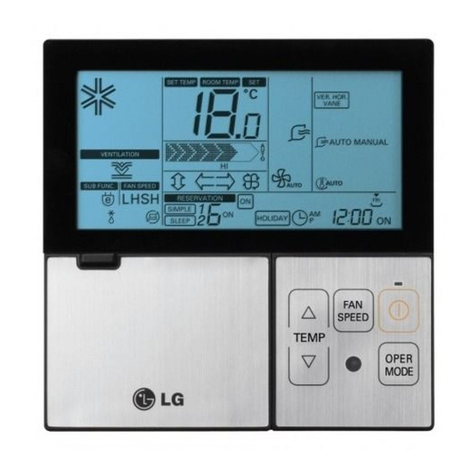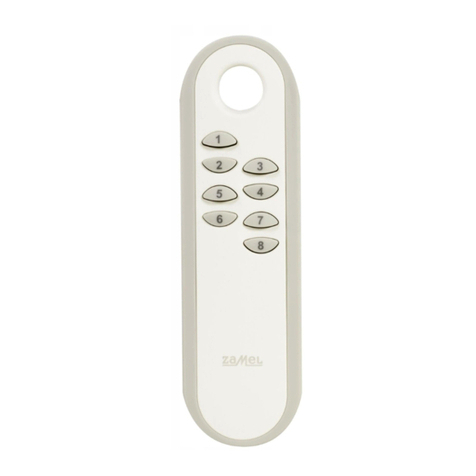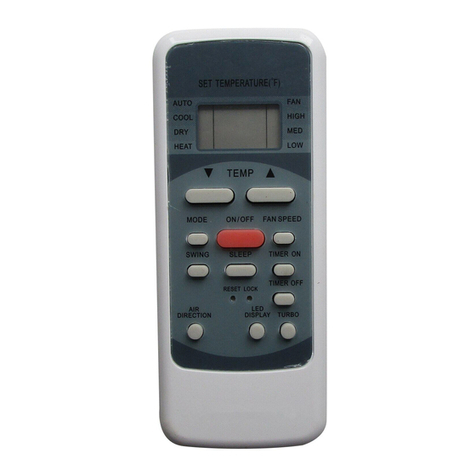Link Guidelines
Link (ID-Setting)
Scan and Normal Mode Information
Warning
- When both red and blue LEDs are "on" and both module and receiver are powered up and bound
together, the Scan Mode is active. Two beeps will be heard when the system is turned on.
- When the red LED is "on"and both module and receiver are powered up and bound together,
the Normal Mode is active. Four quick beeps will be heard when the system is on.
Your Hitec AFHSS 2.4GHz system uses a communication protocol that links and binds the Optima receiver to
your transmitter. Once the receiver and module are“bound,” no other transmitter can interfere with your
receiver during its operation. In the case of multiple model memory transmitters, you can bind as many
Optima receivers to your transmitter as necessary, one per model memory.
Each module and receiver set is paired at the factory in Normal Mode for your convenience. To change the
transmitter to Scan Mode see page 2 (Scan and Normal Mode Information).
- Before each ying session to conrm the radio system is working properly.
- Before the engine or motor is started, turn on the system as explained above.
Then make sure all the servos and control surfaces are working properly.
If any control surface is not moving properly, do not y the aircraft until the problem is solved.
- If you are unable to accomplish a successful range check of 30 meters(100 feet),
DO NOT ATTEMPT TO FLY.
Note
Too Close: Less than 50Cm(18in)
Too Far: More than 5M(15ft)
Hitec’s Spectra AFHSS 2.4GHz systems can be operated with two dierent modes
: Normal Mode or Scan Mode.
Each mode selection can be controlled only from the Spectra 2.4GHz module; however, you can view the
current system status from the receivers.
Normal Mode
- The single LED will light up to indicate the system is in Normal Mode.
Scan Mode
- Both LEDs will light up to indicate the system is in Scan Mode.
How to Link (ID-Setup or Bind in Normal Mode)
Press and hold the button on the module
and turn on the transmitter.
Release the button.
Scan Mode
Normal Mode
Power Down
Activation Mode
Normal/Scan
Selection Mode Release the button
From Normal Mode
it switches to Scan Mode in one second
From Scan Mode
it switches to Normal Mode in one second
Press and Hold the button
for about six second
Turn on the transmitter rst, then the receiver
Red LED will blink to indicate it’s
searching for a
receiver.
Press and hold the button on Optima 6,
and turn on the power.
Release the button.
When the link is completed, the red LED glows
solid and the blue LED ashes on the module.
To save the setting, turn the power o for
both the receiver and transmitter.
Turn the power on for both the transmitter and receiver. When you hear four
continuous beep sounds with LED status as indicated in the drawing below,
the system is in Normal Mode.
Module Receiver
Telemetry System
The Hitec Spectra 2.4GHz module and Optima series receivers feature full telemetry capabilities (except for the
Optima 6) and include a Low Receiver Battery Warning as a basic function.
I. Basic Function: Low On-board Battery Warning - for All Optima Receivers
- When the Optima series receiver is powered up, it will automatically detect the battery voltage level and
recognize between 4-cell or 5-cell NiMH and NiCd batteries (4-cell < 5.8V <5-cell).
If a 2-cell LiPo battery is being used, you can customize the battery warning level by using our HPP-22
program.
- When battery level is safe (4-cell > 4.5V, 5-cell > 5.6V), no changes will appear to the LED lights.
- When battery level is low (4-cell < 4.5V, 5-cell < 5.6V), the blue LED glows constantly and the red LED blinks
fast. Three continuous beeps from the module serve as a low receiver battery warning. Upon hearing the
alarm, we advise you to land at once.
II. Optional Functions: GPS, FUEL, TEMP, O-RPM, M-RPM Sensors - Applicable for Optima 7 & 9 Only
- More devices will be available in the future. Check the Hitec website at www.hitecrcd.com for more
up-to-date informatio
- Low Battery Warning function is only for reference. The actual battery level may dier.
Be aware that lazy battery eect or battery memory eects could impact the Low Battery
Warning function from operating properly.
- When 2.4GHz system and HV servos are used together, we strongly recommend using a large
capacity battery pack in a fully charged condition. You must constantly monitor the battery status.
Warning
www.hitecrcd.com
www.hitecrcd.com www.hitecrcd.com
www.hitecrcd.com
- Link must be established within 15 feet of the transmitter and receiver.
- Transmitter and receiver need to be at least 18 inches from each other to link properly.
- In the Scan Mode, if the transmitter or receiver has been shut o or disconnected
for more than one second, both module and receiver need to be rebooted (turn the
power o and back on).
Note
II. Optional Functions: GPS, FUEL, TEMP, O-RPM, M-RPM Sensors - Applicable for Optima 7 & 9 Only
- There are more devices available in the future. Check the Hitec website at www.hitecrcd.com for more
up-to-dated information.
HTS-GPS (GPS Sensor)
HTS-FUEL (Fuel Level Sensor)
This fuel level sensor indicates ve steps of fuel level (Full, 3/4, 1/2, 1/4, Empty) to the
yer. Installation is easy, simply stick the sensor outside of the fuel tank and y. It can
even read the values during inverted ight
Power-up the system prior to fueling.
- During extreme 3D ight, the reading can be inaccurate, if this happens try to hover
(for Heli), and atten out (for Acro) for a few seconds to re-establish an accurate reading.
The fuel sensor is only made to be used with glow fuel.
HTS-MRPM (RPM Sensor)
HTS-TEMP (Temperature Sensor)
HTS-SS can measure up to four dierent temperature locations, using the HTS-TEMPs,
the temperature sensors. These specially designed temperature sensors are wrapped
with high temp resistant shrink tubing and can read temperatures
from -40°C to 200°C (-40°F to 392°F).
These sensors can be used almost anywhere.
M-RPM sensor has been developed for indoor aircraft and for applications where the
O-RPM sensor is too big to be installed. Furthermore, it will give you a much more
accurate reading. For optimum performance, make sure the distance between the
magnet and the sensor is less than 1mm.
HTS-ORPM (RPM Sensor)
The Optical RPM sensor was made to be used with larger, outdoor, use helicopters.
Installation is simple, attach it to the boom and connect it to the sensor station.
It can read from 0 to 50,000 RPM.
- The readout can be inaccurate and inuenced by the weather condition
- For a more accurate reading, install the sensor as far away from the y bar paddles
as possible.
Hitec’s GPS sensor is specially designed for R/C application, unlike conventional
single dimension GPS sensor, such as car navigation, the ve dimension cube
Antenna has been implemented to cover dynamic movement of R/C aircraft.
As a result, it could receive stable GPS information, even during 3D ight.
- When the system boots up for the rst time, the position recognition time is
usually slower, depending on the area you are in. Once it connects, it memorizes its
last location for about 4 hours. When the system reboots at the same location within
that four hour time period, the position recognition time will be signicantly shortened.
- During extreme 3D ight, the signal can be lost, if this happens try to stabilize the
aircraft until the connection is restablished.


